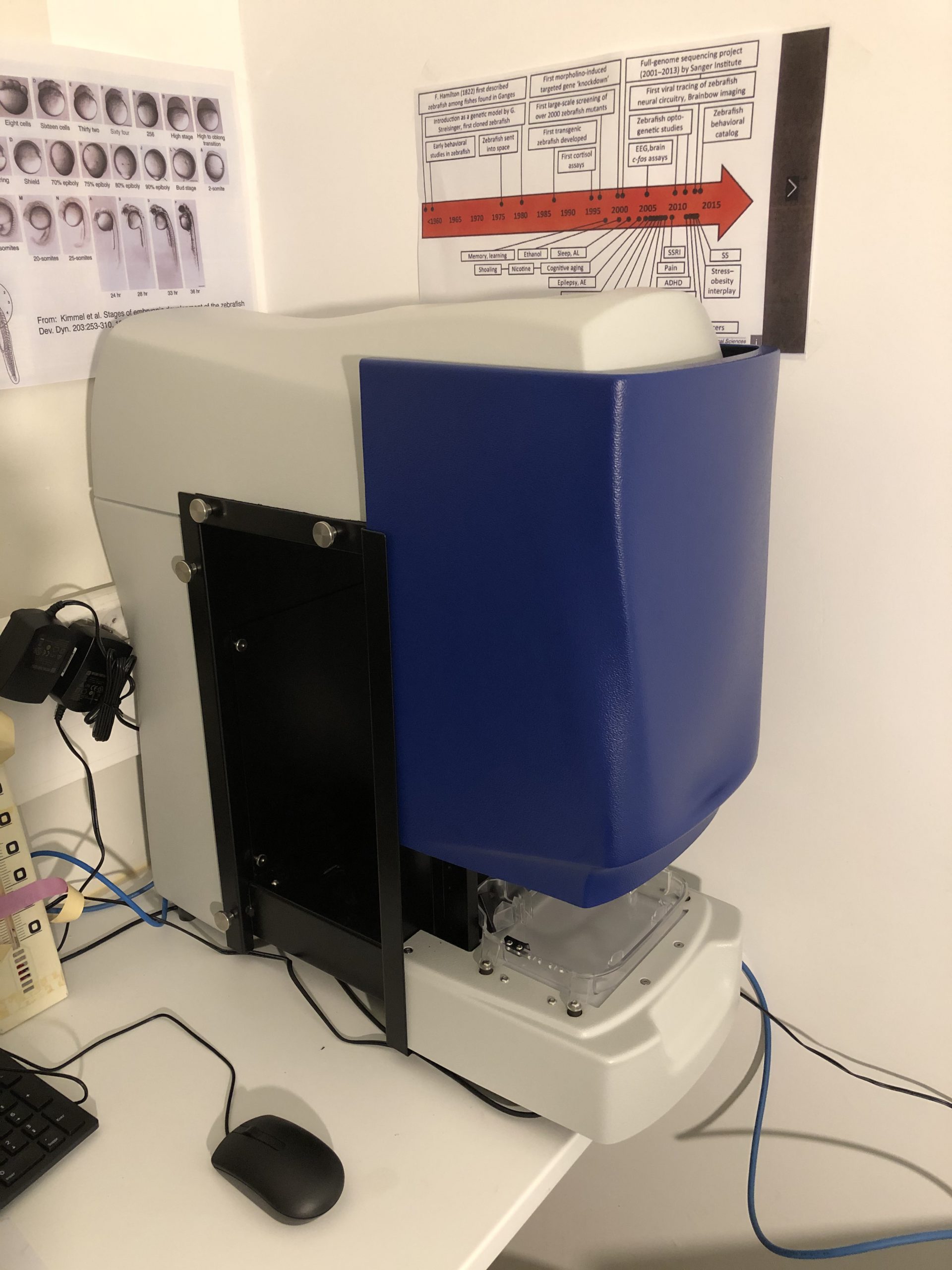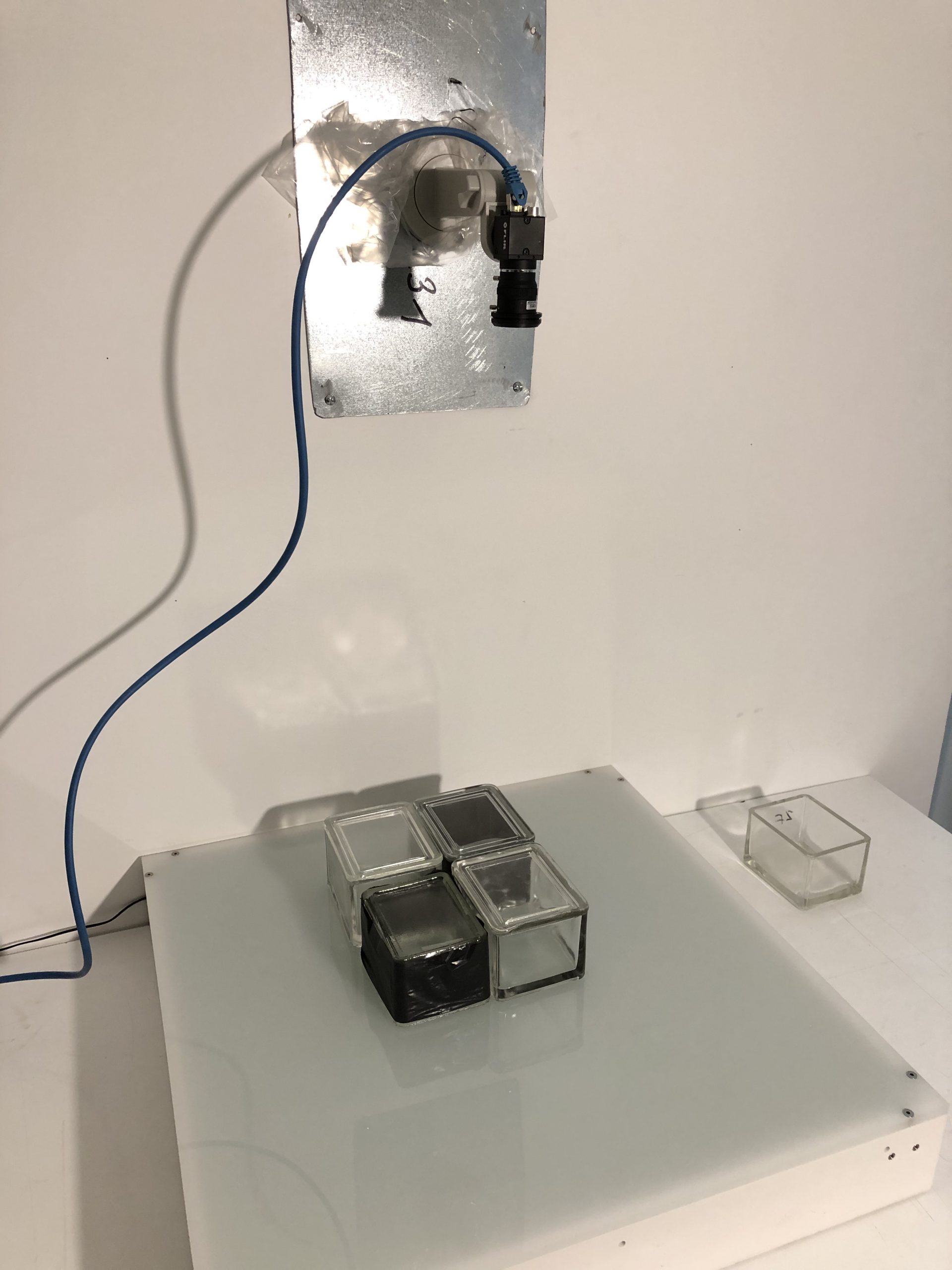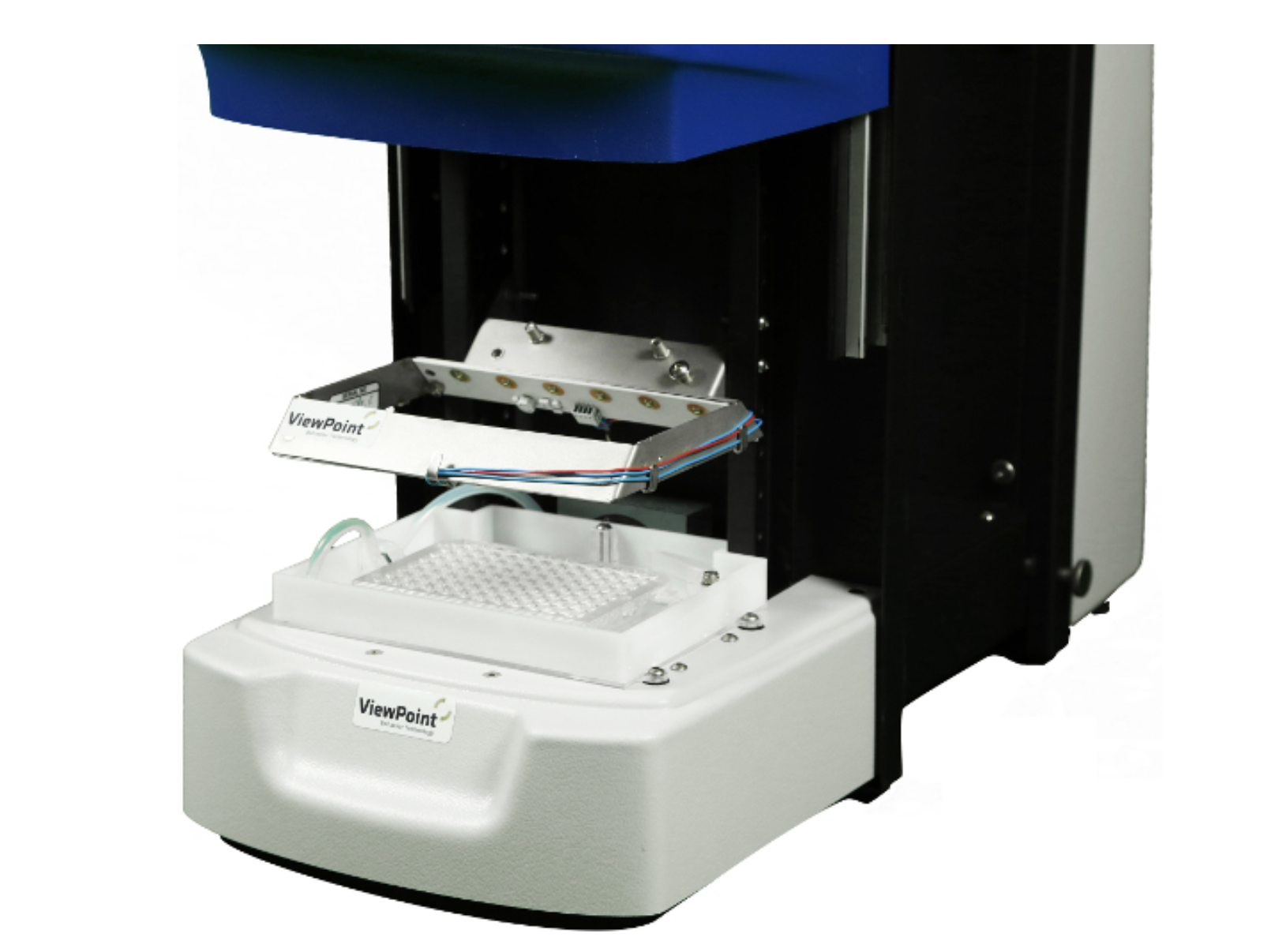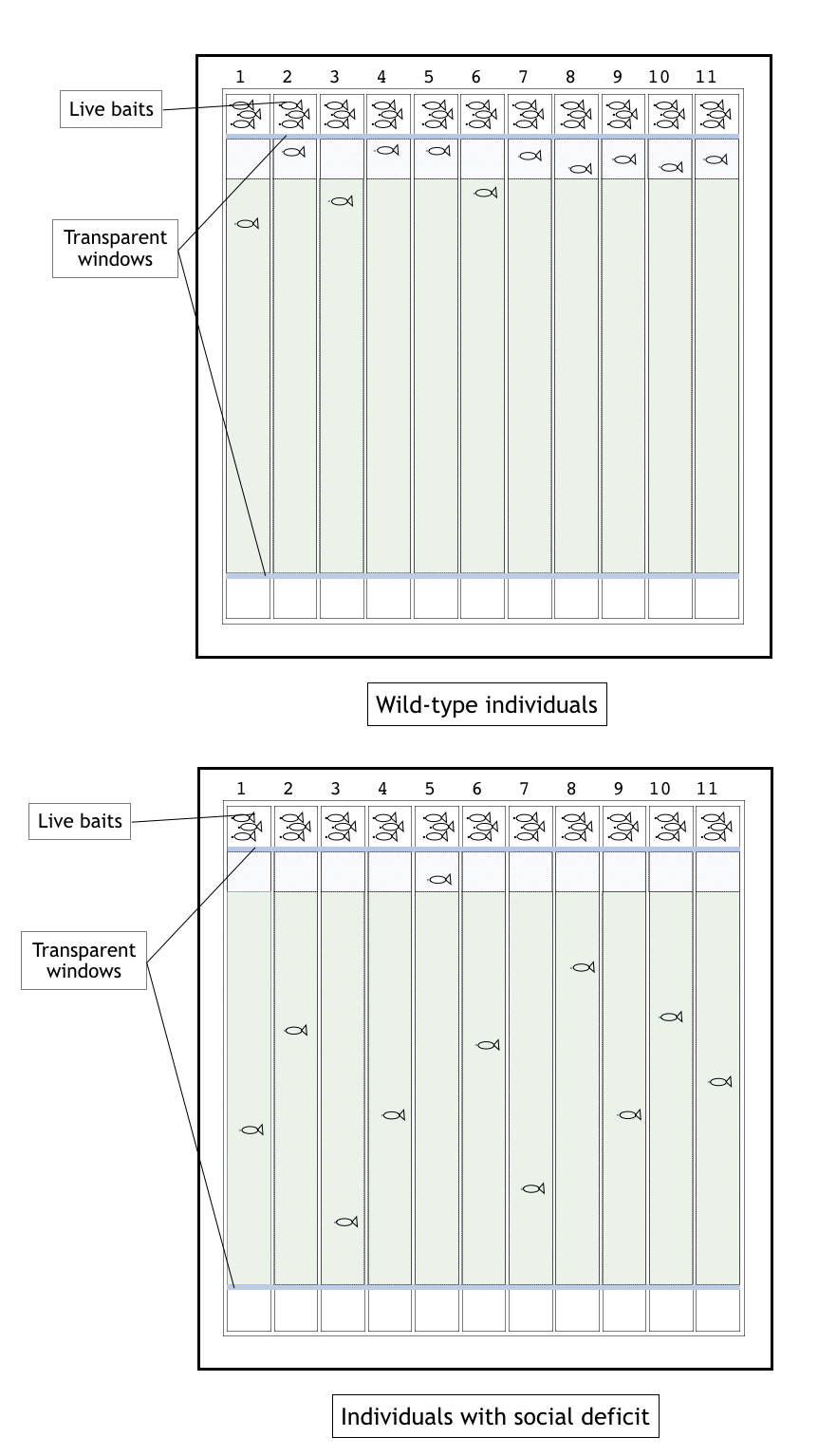


The Robert Debré PhenoFish Platform created in 2009, is devoted to research on zebrafish behavior for scientists working in various domains of biology, including neurosciences, development, human diseases, toxicology, and drug screening.
What services?
- Production of zebrafish embryos and adults
- Zebrafish husbandry
- Behavioral analysis (locomotion, anxiety, sociability, ..)
- Drug screening
Why using the zebrafish as model ?
In the last decade, the zebrafish (Danio rerio) has become a powerful and versatile animal model for translational research on human neurological and genetic disorders, and therapeutic drug screening. Beyond its remarkable optical transparency, the CNS of this small vertebrate exhibits a deep resemblance with that of human. Physiological, emotional and social behavioral pattern similarities between human and zebrafish have also been well established.
Expertise
Behavior analysis and tests (locomotion, anxiety, sociability, ..)
Drug screening
Equipment
Housing Area
Wild type, transgenic, and mutants lines
Zebrabox, a device allowing automated tracking of zebrafish larvae
PhotoMotor Response Module for high-throughput psychoactive drug screening with zebrafish embryos.
Vibration Module to characterize disorders of the sensory system.
Social interaction test to identify autism-like behavior
Team
Nadia Soussi-Yanicostas– Executive manager
Constantin Yanicostas – Scientific manager
Christiane Romain and Olivier Bar – Operational manager
Contact
Nadia Soussi-Yanicostas
Tel : 01 40 03 19 31
Email : nadia.soussi@inserm.fr
INSERM UMR1141- NeuroDiderot -Université de Paris
Hôpital Robert Debré
48 bd Sérurier,
75019 Paris – France
Equipments

ZebraBox
ZebraBox is a state of the art automated observation and video tracking device designed by ViewPoint. It is a complete system for high-throughput tracking and behavioral analysis of zebrafish (Danio rerio). ZebraBox can be deployed to track zebrafish larvae in multi-well plates, as well as single adult zebrafish, and shoals.

ZebraTower

PhotoMotor
ZebraBox upgraded with a PhotoMotor Response Module for microplates, according to Dr. David Kokel protocol including : ZebraBox software extension for High Intensity Light Source – Top high intensity light source on top of the zebrafish - Monitoring of fish locomotion - Control of light sequences

Vibration Module
The ZebraBox Vibration Module helps to understand how the Zebrafish ear and brain process sound and control balance, allowing to investigate the causes of disorders of these sensory systems Zebrabox – Vibration Module for auditory analysis The ZebraBox can be equipped with a vibration module to create reproducible and standardized sound and vibration stimuli: – Frequency range 20 to 20.000 Hz - 40W amplifier The ZebraBox Adapter Software allows programing and controlling the stimuli: – Vibration modulation control and sequences - Vibration Time - Vibration Duration - Vibration Frequency
Sociability test

In the wild, the zebrafish is a social animal that lives in large schools (shoaling). Within the experimental setup shown above, wild-type juveniles (up) displayed a strong visual attraction toward their conspecific partners as shown by the time spent in “social interaction zones” immediately adjacent to the baits (blue areas). In contrast, juveniles with social deficit (individuals showing autism disorder-like syndrome) (bottom), were not attracted by the view of a small school of conspecific partners and spent most of the time in zones far from the baits (green areas). Thus, the described setup makes it possible to not only rapidly estimate the sociability of individuals, but also quantify their social skills.
Zebrafish in toxicology and drug discovery

High-throughput screening are frequently used in toxicology and drug discovery research. Zebrafish lend themselves well for toxicology, teratology, and drug discovery research. Zebrafish behavior is complex and can be used to investigate a large spectrum of brain functions, in a large number of subjects. One example of such study involves the use of zebrafish as a model to study epilepsy. Here researchers used seven-day-old zebrafish and the ZebraLab system to assess locomotor activity in response to antiepileptic drugs.
An introduction to high-throughput behavioral drug screening With the development of high-throughput behavioral screening, a powerful tool to discover and develop pharmaceuticals, monitor for toxins, and screen for successful gene modifications has emerged.
Light-induced epileptiform seizures in gabra1-/- zebrafish mutant larvae
Zebrabox
Embryo motility
ZebraBox
Publications with zebrafish
2021
– Alexandre Brenet , Rahma Hassan-Abdi, and Nadia Soussi-Yanicostas.
Bixafen, a succinate dehydrogenase inhibitor fungicide, causes microcephaly and motor neuron axon defects during development
Chemosphere, Chemosphere. 2021 Feb;265:128781. doi: 10.1016/j.chemosphere.2020.128781.
2020
– Somkhit J, Loyant R, Brenet A, Hassan-Abdi R, Yanicostas C, Porceddu M, Borgne-Sanchez A, Soussi-Yanicostas N.
A fast, simple and affordable technique to measure oxygen consumption rates in living zebrafish embryos.
Zebrafish. 2020 , May 4. doi: 10.1089/zeb.2020.1878.
– Brenet A, Somkhit J, Hassan-Abdi R, Yanicostas C, Igert A, Saurat D, Taudon N, Dal-Bo G, Nachon F, Dupuis , and Soussi-Yanicostas N.
Preclinical zebrafish model for organophosphorus intoxication: neuronal hyperexcitation, behavioral abnormalities and subsequent brain damages.
Scientific Reports, 2020 Nov 5;10(1):19228. doi: 10.1038/s41598-020-76056-8.
2019
– Brenet A, Hassan-Abdi R, Somkhit J, Yanicostas C, Soussi-Yanicostas N.
Defective Excitatory/Inhibitory Synaptic Balance and Increased Neuron Apoptosis in a Zebrafish Model of Dravet Syndrome.
Cells. 2019; 8(10):1199. doi: 10.3390/cells8101199.
– Hassan-Abdi R, Brenet A, Bennis M, Yanicostas C, Soussi-Yanicostas N.
Neurons Expressing Pathological Tau Protein Trigger Dramatic Changes in Microglial Morphology and Dynamics.
Front Neurosci. 2019;13. doi: 10.3389/fnins.2019.01199.
– Mairesse J, Zinni M, Pansiot J, R Hassan-Abdi , C Demene , M Colella , C Charriaut-Marlangue , A Novais , M Tanter , S Maccari , P Gressens , D Vaiman , O Baud*, N Soussi-Yanicostas*. * last co-authors.
Oxytocin receptor agonist reduces perinatal brain damage by targeting microglia.
Glia. 2019;67(2):345-359. doi: 10.1002/glia.23546.
– Van Steenwinckel J, Schang AL , Krishnan M, Degos V, Delahaye-Duriez A, Bokobza, Csaba Z , Verdonk F , Montané A, Sigaut S, Hennebert O, Lebon S, Schwendimann L, Le Charpentier T, Hassan-Abdi R, Ball G, Aljabar P , Saxena A, Holloway R, Birchmeier W, Baud O, Rowitch D, Miron V, Chretien C , Leconte C , Besson V, Petretto E, Edwards D , Hagberg E , Soussi-Yanicostas N, Fleiss B, Gressens P Decreased microglial Wnt/β-catenin signalling drives microglial pro-inflammatory activation in the developing brain.
Brain. 2019;142(12):3806-3833. doi:10.1093/brain/awz319.
2018
– Samarut É, Swaminathan A, Riché R, Liao M, Hassan-Abdi R, Renault S, Allard M, Dufour L, Cossette P, Soussi-Yanicostas N, Drapeau P.
γ‐Aminobutyric acid receptor alpha 1 subunit loss of function causes genetic generalized epilepsy by impairing inhibitory network neurodevelopment.
Epilepsia. 2018;(September):2061-2074. doi:10.1111/epi.14576.
– Swaminathan A, Hassan-Abdi R, Renault S, Siekierska A, Riché R, Liao M, de Witte P, Yanicostas C, Soussi-Yanicostas N, Drapeau P, E Samarut.
Non-canonical mTOR-Independent Role of DEPDC5 in Regulating GABAergic Network Development.
Curr Biol. 2018;28:1924-1937. doi: 10.1016/j.cub.2018.04.061.
– Alavi Naini SM, Yanicostas C, Hassan-Abdi R, Blondeel S, Bennis M, Weiss RJ, Tor Y, Esko JD, Soussi-Yanicostas N.
Surfen and oxalyl surfen decrease tau hyperphosphorylation and mitigate neuron deficits in vivo in a zebrafish model of tauopathy.
Transl Neurodegener. 2018;7(1). doi:10.1186/s40035-018-0111-2.
2016
– Lebcir A, Hassan-Abdi R, Yanicostas C, Soussi-Yanicostas N.
A Rapid and Efficient Method of Identifying G0 Males with Mosaic Germ Line Cells.
Zebrafish. 2016 Dec;13(6):535-536. DOI: 10.1089/zeb.2016.1363.
2015
– Alavi Naini* SM, Sepulveda-Diaz* JE, Huynh* MB, Ouidja MO, Yanicostas C, Chantepie S, Villares J, Lamari F, Jospin E, van Kuppevelt TH, Mensah-Nyagan AG, Raisman-Vozari* R, Papy-Garcia* D, Soussi-Yanicostas* N.
HS3ST2 expression is critical for the abnormal phosphorylation of tau in Alzheimer’s disease-related tau pathology.
Brain. 2015;138(Pt 5):1339-54. *Co-first and last authors. doi: 10.1093/brain/awv056.
2013
– Ghoumid J, Drevillon L, Alavi-Naini SM, Bondurand N, Rio M, Briand-Suleau A, Nasser M, Goodwin L, Raymond P, Yanicostas C, Goossens M, Lyonnet S, Mowat D, Amiel J, Soussi-Yanicostas N, Giurgea I.
ZEB2 zinc-finger missense mutations lead to hypomorphic alleles and a mild Mowat-Wilson syndrome.
Hum Mol Genet. 2013, 1;22(13):2652-61. doi: 10.1093/hmg/ddt114.
2012
Martin E, Yanicostas C, Rastetter A, Naini SM, Maouedj A, Kabashi E, Rivaud-Péchoux S, Brice A, Stevanin G, Soussi-Yanicostas N.
Spatacsin and spastizin act in the same pathway required for proper spinal motor neuron axon outgrowth in zebrafish.
Neurobiol Dis. 2012 Dec;48(3):299-308. doi: 10.1016/j.nbd.2012.07.003.
Ayari B, Landoulsi A, Soussi-Yanicostas N.
Localization and characterization of kal 1.a and kal 1.b in the brain of adult zebrafish (Danio rerio).
Brain Res Bull. 2012, Jul 1;88(4):345-53. doi: 10.1016/j.brainresbull.2012.03.006.
2010
Ayari B, El Hachimi KH, Yanicostas C, Landoulsi A, Soussi-Yanicostas N.
Prokineticin 2 expression is associated with neural repair of injured adult zebrafish telencephalon.
J Neurotrauma. 2010 May; 27(5):959-72.
2009
Yanicostas C, Herbomel E, Dipietromaria A, Soussi-Yanicostas N.
Anosmin-1a is required for fasciculation and terminal targeting of olfactory sensory neuron axons in the zebrafish olfactory system.
Mol Cell Endocrinol. 2009 Nov 27;312(1-2):53-60. doi: 10.1016/j.mce.2009.04.017.
2008
Yanicostas C, Ernest S, Dayraud C, Petit C, Soussi-Yanicostas N.
Essential requirement for zebrafish anosmin-1a in the migration of the posterior lateral line primordium.
Dev Biol. 2008 Aug 15;320(2):469-79. doi: 10.1016/j.ydbio.2008.06.008.
2007
Ernest S, Guadagnini S, Prévost MC, Soussi-Yanicostas N.
Localization of anosmin-1a and anosmin-1b in the inner ear and neuromasts of zebrafish.
Gene Expr Patterns. 2007 Jan;7(3):274-81.
Patents using zebrafish model
Soussi-Yanicostas N, Yanicostas C, Alavi-Naini MS. 2011. International patent (deposit number: PCT/EP2012106523). Materials and methods for the treatment of tauopathies. Ce brevet a été étendu aux Etats-Unis en Juin 2016 (N° de dépôt : 15/196,180).
Papy-Garcia D, Huyn B, Soussi-Yanicostas N, et al. 2012. European patent (deposit number: 12300005414.0-2107). Method of diagnosis, pronostic or treatment of neurodegenerative diseases. Ce brevet a été étendue aux Etats-Unis (Date de dépôt 01/06/2016, N° Dépôt 15/196,180), Déposant: SATT Ile-de-France Innov.
Contact
Nadia Soussi-Yanicostas
Tel : 01 40 03 19 31
Email : nadia.soussi@inserm.fr
INSERM UMR1141- NeuroDiderot -Université de Paris
Hôpital Robert Debré
48 bd Sérurier,
75019 Paris – France